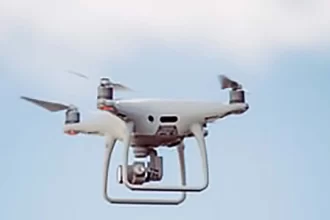Today, IT is experiencing significant changes within the healthcare industry. This has been driven, in part, by the advent of sophisticated new treatments, including robotics, analytical imaging, and robust data networks, enabling the lessons learned from groundbreaking medical practitioners to be distributed more quickly than ever to peers around the world.IT Changes in Healthcare Sector are trending these days.
Securing a consistent patient care environment is of utmost importance for health care providers. New technologies – from digital imaging to security-enhancing baby finders to “always-on” wearable technology – are simultaneously helping to reduce errors, improve care, and reduce costs. The pace and scale at which digital health care technologies are evolving are exponentially growing. Digital technologies enable efforts by health systems to move to new models of patient-centered care and help them build solutions to ‘digital health’ to expand accessibility and affordability, boost quality, and lower costs.
Such described disruptive emerging technologies include Blockchain, Robotic Process Automation (RPA), cloud computing, Artificial Intelligence (AI), and Internet of Things (IoT) applications, all of which enable medical professionals to diagnose and treat patients with increased pace, efficiency, and accuracy. Underneath them, however, the IT system’s role, and in some cases, the data center has become increasingly important.
The Changing Role of IT in Healthcare
With the advent of these disruptive technologies, the introduction of a modern hybrid IT system, combining the pervasive complexity of the cloud with the local computing platform closest to where healthcare practitioners both generate data and need access is both transforming the business models of many health organizations and helping to address many of their associated problems.
Consider robotics’ impact on new medical treatments, which are used explicitly in modern surgical procedures. It is now possible for the most advanced medical instruments to perform the most complex operations, under the control of a doctor who is placed in a room separate from the patient being treated.
In this case, the surgical team will be surrounded by monitors and control systems that are used through the procedure to direct the robotic equipment. Miniature cameras are operating close and often inside the patient relay images analyzed by on-site IT equipment enabling surgeons to make life-changing decisions with greater accuracy and less risk of error than ever. While not yet a topic associated with the healthcare industry, such IT equipment is an archetypal example of a deployment of ‘Edge Computing.’
Latency, for example, is a critical factor; for the procedure to be successful, the images must be transmitted and processed in real-time. Using a remote server somewhere in the cloud is a poor option for such applications, so you need to position the necessary IT equipment near the point of use. Usually, the equipment racks, or microdata centers, are located in network closets near the control room where the surgeon works, as are Uninterruptible Power Supplies (UPSs), which are used to secure the equipment itself from power surges or power outages. Resilience and availability are absolutely essential for the healthcare organization in this case.
AI, Security, and Patient Data
Another factor may be the functionalities of Artificial Intelligence (AI) or Machine Learning (ML). For example, as image information, which is essential for surgery, is analyzed locally, key data points are shared with other medical systems around the world via the cloud. These data pools will analyze and document similar operations results, forming a feedback loop using a crowd-sourced information database. In this way, the lessons learned by surgeons developing advanced medical methods can be disseminated quickly across the world, raising awareness of new and possible therapies that had previously been impossible for humanity. If you’re interested, you can learn more about Always Best Care on this blog about senior care, which delves into the intersection of technology and healthcare for elderly individuals.
Finally, data security is another critical aspect of IT professionals in the healthcare field. Since healthcare technology is increasingly becoming an extension of IT, these assets require a higher degree of physical security as well as cybersecurity. For example, how does one ensure that patient information, and indeed data centers and server rooms, always remain safe and secure? Of course, there are the software and cybersecurity services that an IT Manager needs to employ. Still, the most considerable risk to patient information remains with human error, an unauthorized person gaining physical access to its IT system. Therefore, physical security is of paramount importance to the healthcare organization and, whether, through ID cards, environmental monitoring, or even secure access to IT racks or network closets, the protection of patient data remains crucial.
IT Architecture of Tomorrow
It is easy to see that the infrastructure systems that help it must change as health care progresses. However, healthcare facilities need a rock-solid physical infrastructure to support their assets to enable these technologies. Edge computing is the IT infrastructure required to provide these modern and digitized medical facilities, ensuring patient care and treatment remain the primary concern of medical professionals and not the reliability of their IT systems.
So why would IT Managers take notice of the edge within the healthcare sector? The answer to that is simple. This computing architecture directly supports the advances in medical surgery, treatment, and recovery of patients tomorrow. In the future, as medical services begin to digitize further, the challenges that accompany them, the need for continuous resources, avoiding internet congestion or low latency, IT security, data, and rapid access to patient information can only be allowed by localized edge computing systems.









